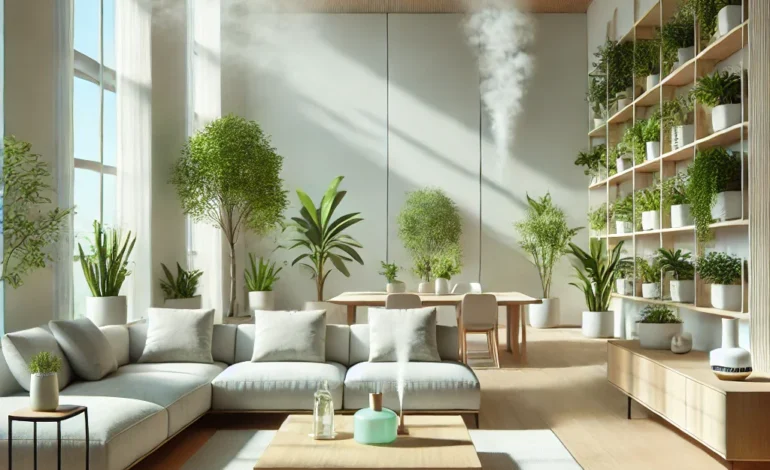Balancing Health and Sustainability in Your Home

Welcome to your journey toward creating a healthy home environment. A healthy home is not just about physical comfort; it’s also about emotional well-being, sustainable practices, and reducing your impact on the planet. In this guide, we’ll explore key elements that contribute to a healthy living space.
1. Improve Indoor Air Quality
Indoor air can be just as polluted as outdoor air due to factors like cooking fumes, dust, and chemicals from cleaning products. Poor indoor air quality can lead to respiratory issues, allergies, and even mental health problems. Here are some steps you can take to improve your home’s air quality:
Use Air Purifiers
Air purifiers with high-efficiency particulate air (HEPA) filters can trap fine particles in the air. These devices are effective in improving indoor air quality, especially in areas where there’s a lot of cooking or dust.
Ventilation
Opening windows during certain times of the day or using exhaust fans can help circulate fresh air throughout your home. This is particularly important in kitchens and bathrooms, where humidity can be high.
Houseplants
While some studies suggest that houseplants may not significantly improve indoor air quality, they still offer numerous benefits, such as reducing stress, improving air quality indirectly by attracting beneficial bugs, and adding beauty to your home. Aloe vera and snake plants are popular choices.
2. Implement Toxic-Free Cleaning Practices
Traditional cleaning products often contain harmful chemicals that can contribute to indoor pollution. Switching to natural cleaning solutions can significantly reduce your exposure to these toxins:
Natural Cleaning Solutions
You can use simple, safe ingredients like vinegar, baking soda, and lemon for effective cleaning. These natural alternatives are gentle on the environment and eliminate the need for harsh chemicals.
Essential Oils
Add a few drops of essential oils, such as lavender or eucalyptus, into your cleaning routine. These scents can make your home feel more aromatic without introducing harmful substances.
3. Create a Clutter-Free Living Space
A cluttered home can lead to stress and anxiety. By maintaining an organized and clutter-free environment, you can improve both your mental and physical well-being:
Minimalist Design
Adopting a minimalist design with simple, functional furniture creates open, inviting spaces that promote relaxation and calmness.
Effective Storage Solutions
Invest in effective storage solutions like shelves, baskets, and organizers to keep your space tidy and free of unnecessary items. This not only saves space but also reduces the stress of searching for misplaced items.
4. Sustainable Choices for a Healthier Home
Sustainability is key to creating a healthy home environment. By making eco-friendly choices, you can reduce your carbon footprint while improving your well-being:
Energy Efficiency
Switching to energy-efficient appliances and practices can lower both your energy costs and your environmental impact. Consider using LED bulbs and programmable thermostats to optimize energy usage.
Ethical Food Choices
Incorporating vegan products into your diet is a great way to reduce your environmental footprint. Vegan cheese, for example, is cholesterol-free and often fortified with essential vitamins, making it an excellent choice for health-conscious individuals.
5. Foster Emotional Well-Being
Your home should not only be a place of comfort but also a source of emotional well-being. Here’s how you can create an atmosphere that promotes relaxation and peace:
Decluttering for Mental Wellness
Decluttering your space isn’t just about physical cleanliness; it can also reduce stress, boost productivity, and create a sense of calmness. Focus on minimizing unnecessary items rather than discarding them all at once.
Natural Lighting
Natural light has been shown to improve mood and productivity. Position furniture in your home to maximize sunlight exposure, as this can help reduce feelings of anxiety or depression.
Calming Colors
Use soft, calming colors like blues and greens in rooms where you relax or meditate. These hues can promote a sense of peace and clarity.
Creating a healthy home environment is not just about making individual changes; it’s about integrating these practices into your daily life. By prioritizing air quality, reducing chemical exposure, organizing your space, and choosing sustainable options, you can create a home that supports both your physical and emotional well-being while minimizing its environmental impact.



